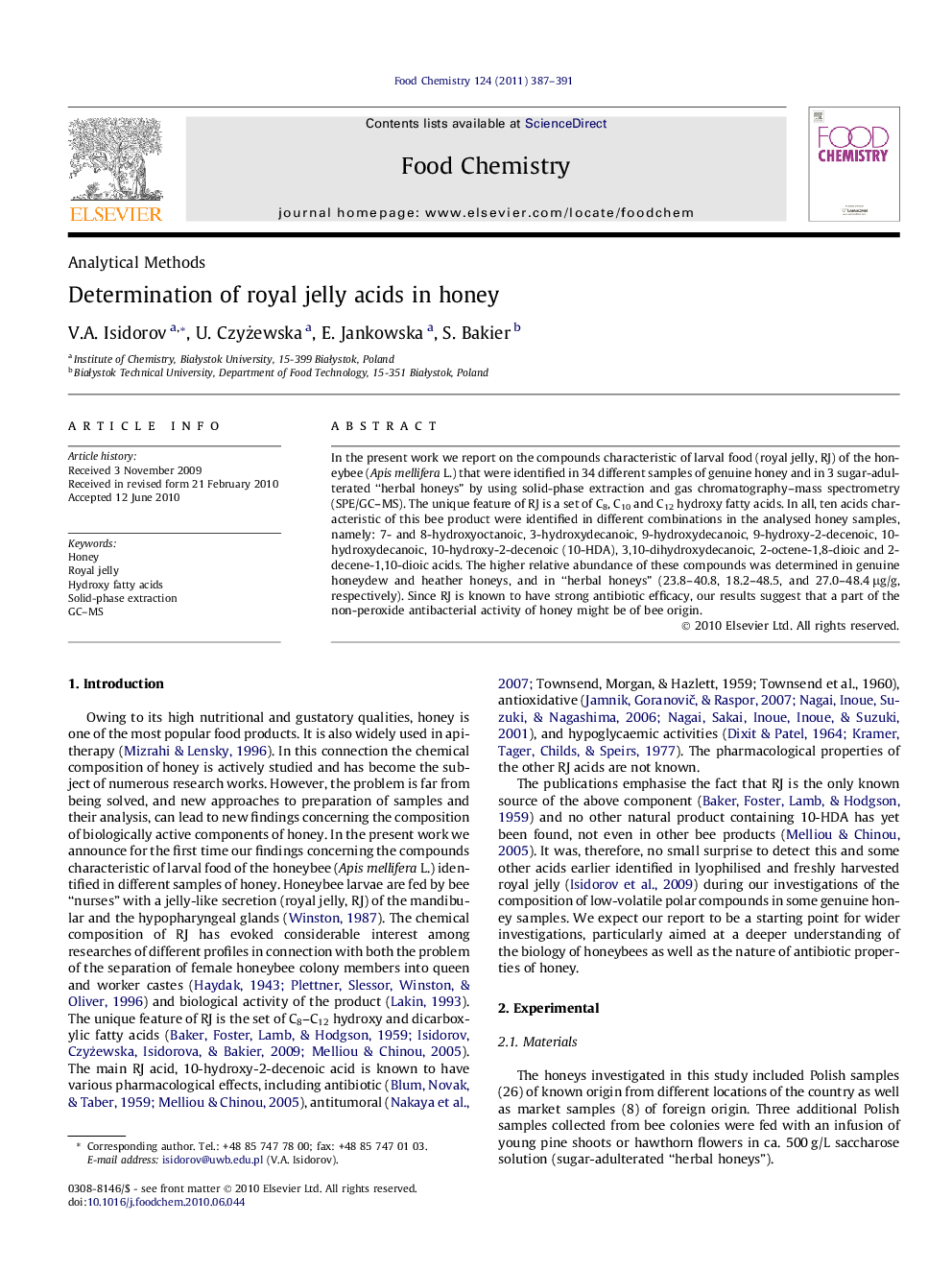| Article ID | Journal | Published Year | Pages | File Type |
|---|---|---|---|---|
| 1187673 | Food Chemistry | 2011 | 5 Pages |
In the present work we report on the compounds characteristic of larval food (royal jelly, RJ) of the honeybee (Apis mellifera L.) that were identified in 34 different samples of genuine honey and in 3 sugar-adulterated “herbal honeys” by using solid-phase extraction and gas chromatography–mass spectrometry (SPE/GC–MS). The unique feature of RJ is a set of C8, C10 and C12 hydroxy fatty acids. In all, ten acids characteristic of this bee product were identified in different combinations in the analysed honey samples, namely: 7- and 8-hydroxyoctanoic, 3-hydroxydecanoic, 9-hydroxydecanoic, 9-hydroxy-2-decenoic, 10-hydroxydecanoic, 10-hydroxy-2-decenoic (10-HDA), 3,10-dihydroxydecanoic, 2-octene-1,8-dioic and 2-decene-1,10-dioic acids. The higher relative abundance of these compounds was determined in genuine honeydew and heather honeys, and in “herbal honeys” (23.8–40.8, 18.2–48.5, and 27.0–48.4 μg/g, respectively). Since RJ is known to have strong antibiotic efficacy, our results suggest that a part of the non-peroxide antibacterial activity of honey might be of bee origin.
